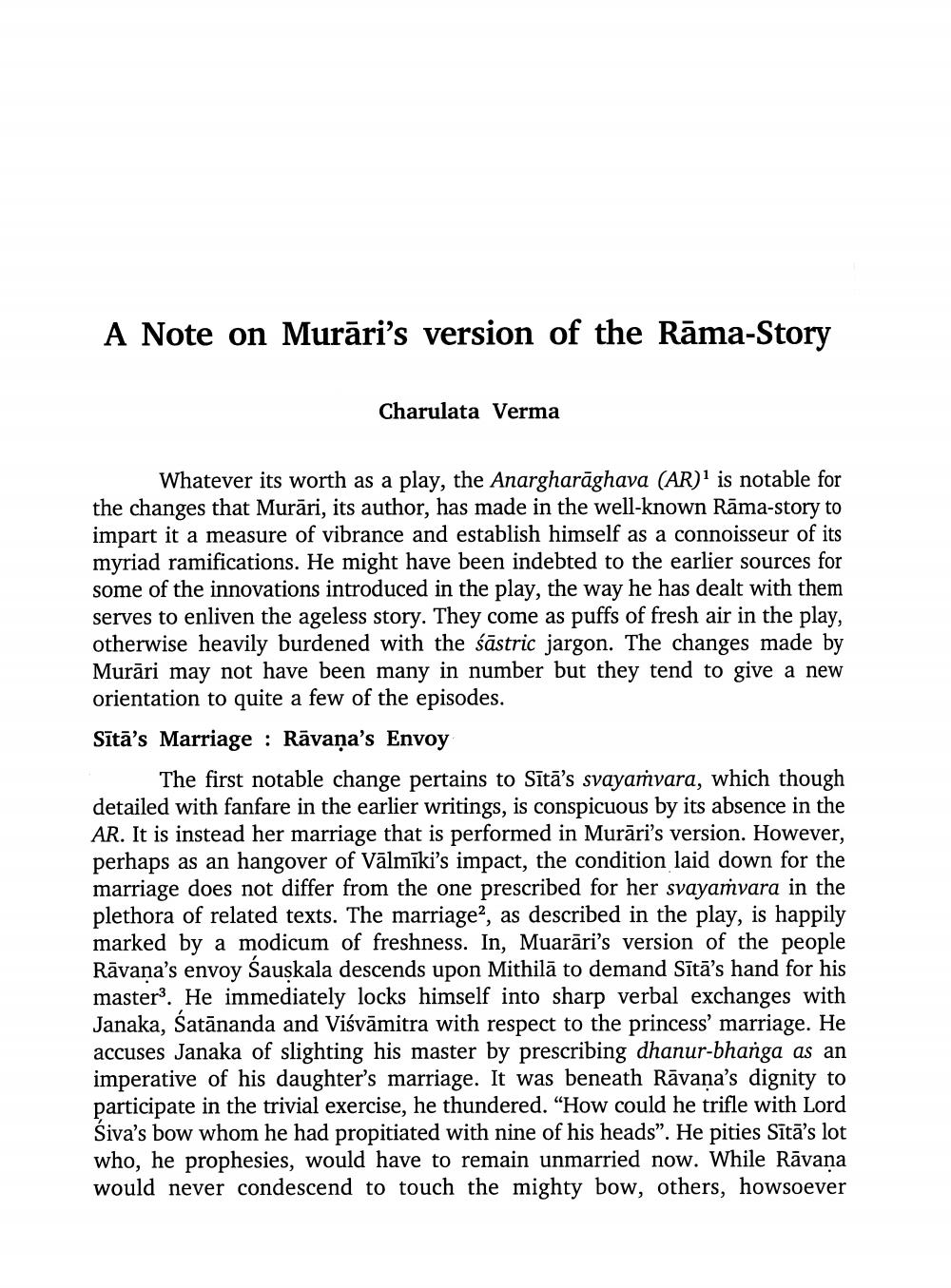________________
A Note on Murāri's version of the Rāma-Story
Charulata Verma
Whatever its worth as a play, the Anargharāghava (AR)1 is notable for the changes that Murāri, its author, has made in the well-known Rāma-story to impart it a measure of vibrance and establish himself as a connoisseur of its myriad ramifications. He might have been indebted to the earlier sources for some of the innovations introduced in the play, the way he has dealt with them serves to enliven the ageless story. They come as puffs of fresh air in the play otherwise heavily burdened with the śāstric jargon. The changes made by Murāri may not have been many in number but they tend to give a new orientation to quite a few of the episodes. Sītā's Marriage : Rāvana's Envoy
The first notable change pertains to Sītā's svayamvara, which though detailed with fanfare in the earlier writings, is conspicuous by its absence in the AR. It is instead her marriage that is performed in Murāri's version. However, perhaps as an hangover of Vālmīki's impact, the condition laid down for the marriage does not differ from the one prescribed for her svayamvara in the plethora of related texts. The marriage, as described in the play, is happily marked by a modicum of freshness. In, Muarāri's version of the people Rāvana's envoy Śauskala descends upon Mithilā to demand Sītā's hand for his masters. He immediately locks himself into sharp verbal exchanges with Janaka, Satānanda and Viśvāmitra with respect to the princess' marriage. He accuses Janaka of slighting his master by prescribing dhanur-bhanga as an imperative of his daughter's marriage. It was beneath Rāvana's dignity to participate in the trivial exercise, he thundered. “How could he trifle with Lord Siva's bow whom he had propitiated with nine of his heads”. He pities Sītā's lot who, he prophesies, would have to remain unmarried now. While Rāvana would never condescend to touch the mighty bow, others, howsoever




